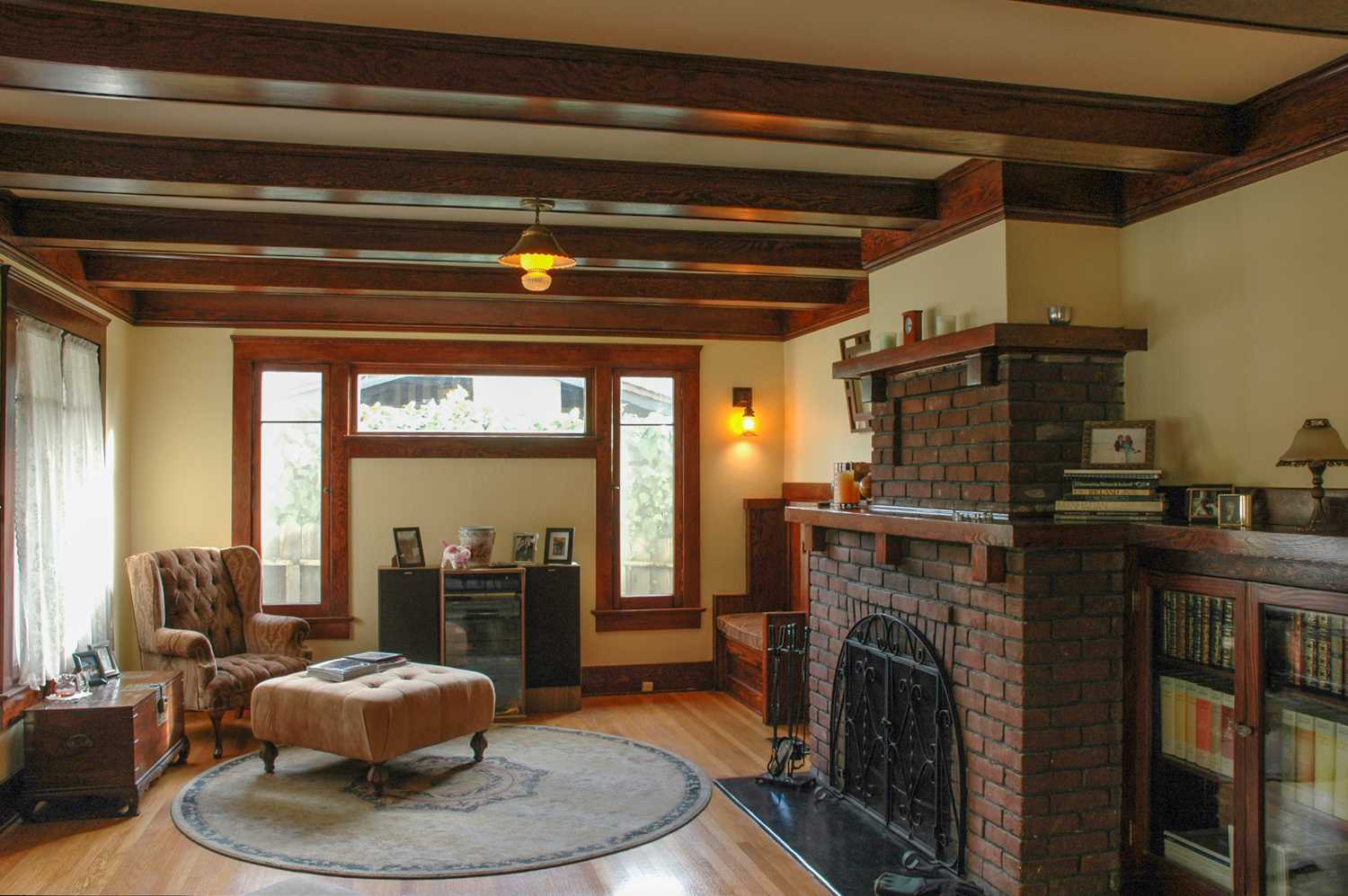
Bungalow Heaven Origins
A personal account of the beginnings of the Bungalow Heaven Landmark District by Bob Kneisel.
The Way It Was
I moved to this neighborhood in the fall of 1983, after my third attempt to buy a house succeeded. The neighborhood was a complete unknown to me, except what I had observed: lots and lots of interesting little houses in a variety of styles, colors, and states of repair. My new house on Catalina Ave. had been rented out for 15 years, and was the worst house on the block. As the last tenant left, he said the place should be bulldozed. (Today this house is occupied by a Pasadena City Councilman.)
My brother (co-owner) and I were to spend 3-1/2 years repairing and restoring the bungalow — but that’s getting ahead of the story. Just before I moved in, Rick Cole had become the new City Councilman for the area. Soon, the City’s Historic Preservation Department would present to the neighborhood a slide show featuring our houses–stressing their importance as lovely, home-grown architecture. The City was just beginning the Bungalow Heaven Architectural Survey to identify the specific style and features of each of the houses here.
(By the way, the name “Bungalow Heaven” was coined for the neighborhood by John Merritt, then a City Historic Preservation staff person, and later became the Executive Director of the California Preservation Foundation. John lived on Mar Vista Ave. and liked the large concentration of bungalows around him.)

The Neighborhood Organizes Against a Threat
Along about 1985 a developer demolished a 2-story Craftsman bungalow on the southwest corner of Wilson Ave. and Washington Blvd. He then proceeded to erect one of the tackiest apartment houses anyone had ever seen. People suddenly realized that the neighborhood was changing, and it was all perfectly legal! The three lots south of Washington Blvd. were zoned for apartments.
Some of the more concerned neighbors began phoning others, and set up a meeting to see what could be done. Soon the precariousness of our neighborhood became clear. To keep our bungalows from being demolished and replaced with a wall of apartment buildings, we would have to aggressively push through a “downzoning” to zone the land back to single family use.
So we circulated petitions, drew more and more people to meetings, insisted that other City Council members listen to us — and we showed them the new apartment building.
After months and months of discussion, hearings, arguing with landowners expecting to bulldoze and cash in, we won. The city changed the zoning of the strip on the south edge of Washington Blvd. to three-units-per-acre. This made building apartments uneconomical, and preserved the existing homes.
Whaddaya Mean, “We’re Historic?”
This victory gave us a new sense of power and of community. We started to see our neighborhood not just as rows of houses, but as our own turf, a place we all liked, we all shared in, and were now working to preserve. Some neighbors began to think about what else we needed to do to preserve our homes. We saw classic bungalows down the street being stuccoed, or fitted with new aluminum windows. We started to realize that some restrictions on this remodeling and “improvement” might be necessary. That meant becoming a historic district. Little ol’ Bungalow Heaven a historic district? Objections were raised: these aren’t mansions, famous people don’t live here. How dare we call ourselves historic? Besides, “It’s my house and I’ll stucco if I wanna.”
So a few of us decided to poll the neighborhood and find out what our neighbors thought about becoming a Landmark District. I must admit, it was pretty awkward, and a little intimidating to knock on someone’s door and ask them how they felt about more government regulations on their property.
After months of procrastination and half-effort, we realized that many people here really did think it was a good idea to become a Landmark District. We must have done a pretty good sell job, because at first, nobody even knew that the name “Bungalow Heaven” referred to their neighborhood.
The staff of the City’s Historic Preservation department helped us develop a “Conservation Plan” to specify what alterations to houses would be restricted. It seemed to take forever to agree on things. Some people wanted paint colors to be regulated, others wanted to regulate only big changes, like stuccoing. After a year and a half, we reached a workable compromise.
Then the hard work began — getting 51% of the property owners to sign a petition accepting these regulations. A lot of our neighbors, past and present, walked a lot of miles and knocked on the doors of the 962 lots in the proposed Bungalow Heaven Landmark District several times. This was the biggest sell job ever. It waxed and waned, leaders moved out of state, property records proved inaccurate and some signatures invalid; the process seemed endless!
In canvassing the neighborhood and talking about the need to preserve it by becoming a Landmark District, we discovered that a host of other issues concerned our neighbors. Some were alarmed at rising crime. Others didn’t like all the traffic. The park was a mess. Abandoned vehicles (and houses) were problems. To deal with these, we realized that we needed a strong neighborhood association. After so much discussion and organizing, forming the Bungalow Heaven Neighborhood Association was easy! Also, we had to establish a neighborhood association before the City would let us become a Landmark District.
In 1989, we finally got 55% of property owners to sign the petition for the Landmark District. We took the petition to the City Council, which included two members representing Bungalow Heaven, Rick Cole and Bill Paparian. The City Council agreed to waive the onerous filing fee, and in October 1989 granted us Landmark District status. We were the first neighborhood in Pasadena to be granted this distinction.